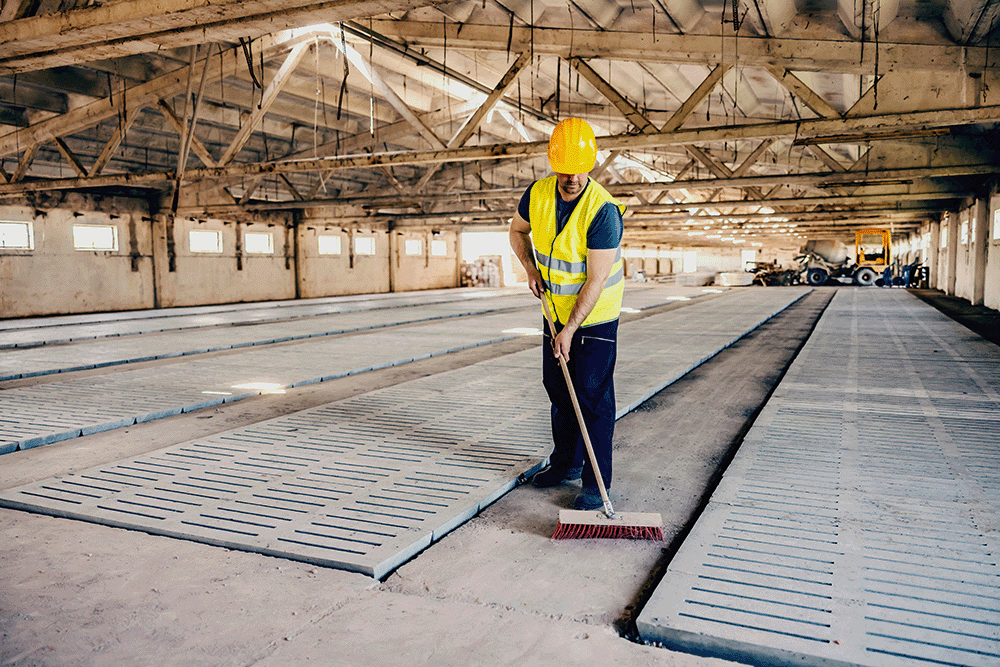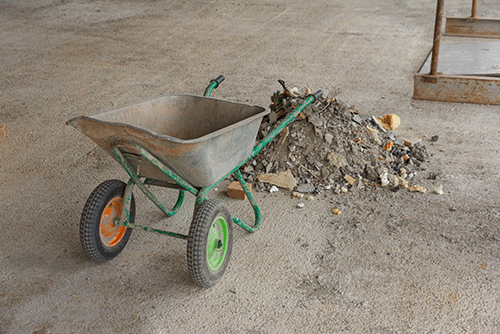Partner with Downstream

Keeping a jobsite clean isn’t just about appearances—it’s about safety, efficiency, compliance, and reputation. A cluttered or unsanitary site can slow down productivity, increase accident risks, and even cause regulatory issues. From proper waste removal to well-planned servicing schedules, maintaining cleanliness is a key part of running a professional operation. In this guide, we’ll break down how to set up an effective cleanliness plan for your construction site, including the right equipment, waste removal strategies, sanitation stations, and service schedules.

A clean jobsite directly impacts:
According to the Occupational Safety and Health Administration (OSHA), housekeeping violations are among the most common safety citations, showing just how important site cleanliness is to compliance.
One of the biggest challenges on a jobsite is managing waste—construction debris, scrap materials, packaging, and more. Without an efficient removal plan, waste piles up fast.
Best practices for waste management:
For large-scale projects, partnering with a waste removal service that can do on-demand dumpster swaps is critical to keeping the site moving without delays.

Even with the right equipment, cleanliness requires consistency. A set schedule prevents waste from piling up and ensures sanitation equipment is serviced before it becomes unusable.
Example schedule:
Using digital jobsite management tools or construction scheduling software can help track these recurring tasks and prevent lapses in service.
A truly clean jobsite isn’t just free of debris—it’s also sanitary for workers. This means providing and maintaining:
Regular servicing is just as important as the initial setup. A neglected sanitation station is a health risk and a morale killer. The Centers for Disease Control and Prevention (CDC) emphasizes that proper sanitation reduces worker illness and improves overall productivity.
Dust is one of the biggest cleanliness challenges on a jobsite—especially in demolition, excavation, or drywall work. Poor air quality can harm workers and violate environmental regulations.
Control methods include:
The right rental partner can make maintaining a clean jobsite much easier.
At Downstream, we provide a wide range of waste management, sanitation, and cleanup equipment for construction projects of any size. Whether you need roll-off dumpsters for debris removal, portable sanitation stations, or buggies for quick cleanup, we offer reliable, well-maintained equipment with flexible rental terms.
Our team can also help coordinate regular servicing schedules so your site never falls behind on cleanliness standards.
Maintaining jobsite cleanliness is a combination of planning, equipment, and discipline. With the right systems in place—from proper waste disposal to regular sanitation servicing—you can create a work environment that is safer, more productive, and more professional.
If your next project needs rental equipment for waste removal or sanitation, contact Downstream to get started with a customized plan for your site.
-min.webp)
Quis nostrud exercitation ullamco laboris nisi ut aliquip ex ea commodo consequat. Duis aute irure dolor in voluptate.
